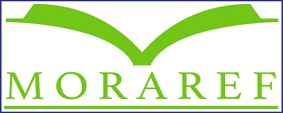FIRE VEHICLE ROUTE, RESPONSE TIME, AND SERVICE COVERAGE OPTIMIZATIONS IN PEKOJAN URBAN VILLAGE,TAMBORA SUBDISTRICT FIRE HOTSPOT OF JAKARTA CITY INDONESIA
DOI:
https://doi.org/10.31004/prepotif.v6i2.5026Keywords:
FIRE VEHICLE ROUTE, RESPONSE TIME, SERVICE COVERAGEAbstract
One challenge in managing fire hazards in an urban setting is how to optimize the fire service route, increase the response time, and increase service coverage. Recently, this challenge is becoming imminent due to road traffic congestion and insufficient road widths that are common in populated cities in the Southeast Asia regions. One of the urban fire hotspots in populated Jakarta City is Pekojan Urban Village, Tambora Subdistrict. This subdistrict is served by Angke Fire Station located in Pekojan’s southwestern parts. Then this research aims to evaluate and compare optimized routes for fire vehicle dispatched from Angke Fire Station to serve 12 neighborhood units (in Bahasa is RW) in Pekojan. The method used the route optimization and network analysis tools in Geographic Information System (GIS) and its related geospatial data including neighborhood units, road networks, traffic congestion, and fire station locations. Geospatial network analysis of data by GIS has an advantage as a method to design and analyze the routing strategy and determine the most optimized route for fire vehicles. Based on the results and with the fire vehicle speed of 40 km/h, the average optimized route distances to travel from the fire station to RWs were 1.092 km (95%CI: 0.888-1.3 km) with an average response time of 1.638 minutes (95%CI: 0.869-2.41 min.). According to the GIS, model, response time of 1 minute only covers 22.77% of Pekojan areas. By increasing response time to 2 minutes, then fire vehicle can cover 98.9% of Pekojan area (AIC= 0.06). Despite the fact that the fire vehicle routes and response times can be optimized, those routes are challenged by the road traffic congestion. This congestion limits the speeds of fire vehicles to less than 20 km/h, as observed in 11.59% of the optimized routes. The service coverages of fire vehicles was also limited due to the narrow street.References
Alazab, A., Venkatraman, S., Abawaj, J., Alazab, M. (2011). An optimal transportation routing approach using gis-based dynamic traffic flows. The 3rd International Conference on Information and Financial Engineering IPEDR 12.
Aringhieri, R., Bruni, M.E., Khodaparasti, S., Van Essen, J.T., (2017). Emergency medical services and beyond: Addressing new challenges through a wide literature review. Computers & Operations Res. 78, 349-368. https://doi.org/10.1016/j.cor.2016.09.016.
Baptist, C., Bolnick, J., (2012). Participatory enumerations, in situ upgrading and mega effects: The 2009 survey in Joe Slovo, Cape Town. Environ. Urban. 24, 59–66.
Bazargan, M., Amirfakhriyan, M., (2017). Optimal routing of emergency relief vehicles using routing algorithm in GIS (case study: Mashhad City). GeoRes. 32 (3), 35-51. https://doi.org/ 10.29252/geores.32.3.35.
Beaudry, A., Laporte, G., Melo, T., Nickel, S., (2010). Dynamic transportation of patients in hospitals. OR spectrum. 32(1), 77-107. https://doi.org/10.1007/s00291-008-0135-6.
Billa, L., Pradhan, B., Yakuup, A., (2014). GIS routing and modelling of residential waste collection for operational management and cost optimization. Pertanika Journal of Science and Technology. 22, 193-212.
Chen, Y., (2012). The Study of vehicle routing model in emergency situations. Advanced Materials Research. 433-440. 4807-4812. https://doi.org/ 10.4028/www.scientific.net/AMR.433-440.4807.
Cova, T., (1999). GIS in emergency management.
Feng, G., Su, G., Sun, Z.,(2017). Optimal route of emergency resource scheduling based on GIS. 1-5. The 3rd ACM SIGSPATIAL Workshop.
Fukushima, F., Moriya, T., (2020). Objective evaluation study on the shortest time interval from fire department departure to hospital arrival in emergency medical services using a global positioning system ? potential for time savings during ambulance running. IATSS Research. 45.
Ghaderi, G., Brussel, M., van den Bosch, F., Grigolon, A.B., (2017). Reducing travel time in Bus Rapid Transit through limited stop services, a GIS based approach. Computers in Urban Planning and Urban Management (CUPUM), 11-14 July 2017 at Adelaide, Australia
Ghadiri, N.M., Banar, M., (2018). Emergency response time minimization by incorporating ground and aerial transportation. Annals of Optimization Theory and Practice. 1(1), 43-57. https://doi.org/10.22121/AOTP.2018.108905.1004.
Graur, D.,(2017). GIS analysis of road network accessibility for emergencies managed by firefighters (case study – Suceava County, Romania). Acta Geobalcanica 3-2, 65-70.
Keenan, P., (2008). Modelling vehicle routing in GIS. Operational Research. 8, 201-218. https://doi.org/10.1007/s12351-008-0021-7.
Kitamura, Y., Hayashi, M., Yagi, E., (2018). Traffic problems in Southeast Asia featuring the case of Cambodia's traffic accidents involving motorcycles. IATSS Research. 42. https://doi.org/10.1016/j.iatssr.2018.11.001.
Knyazkov, K., Derevitsky, I., Mednikov, L., Yakovlev, A., (2015). Evaluation of dynamic ambulance routing for the transportation of patients with acute coronary syndrome in Saint-Petersburg. Procedia Computer Science. 66, 419–428. https://doi.org/ 10.1016/j.procs.2015.11.048
K?s, K., Cheu, R.L., Horák, T., (2016). GIS approach in vehicle route optimization for residential recyclables collection. 2016 Smart Cities Symposium Prague (SCSP). 1-6, https://doi.org/10.1109/SCSP.2016.7501024.
Lee, Y., Kim, M., Lee, J., (2020). Firefighting in vulnerable areas based on the connection between fire hydrants and fire brigade. Sustainability. 13. 98. https://doi.org/10.3390/su13010098.
Lindeskov, C.K., (2002). Ambulance allocation using GIS Technical University of Denmark, Denmark.
Malakahmad, A., Bakria, P., Radin, M., Khalil, N.D., (2014). Solid waste collection routes optimization via GIS techniques in Ipoh city, Malaysia. Procedia Engineering. 77, 20 – 27. https://doi.org/10.1016/j.proeng.2014.07.023.
Milenkovi?, M., Keki?, D., (2016). Using GIS in emergency management. Sinteza 2016, 202-207. https://doi.org/10.15308/Sinteza-2016-202-207.
Moyo, T., Kibangou, A., Musakwa, W., (2020). Exploring the potential of traffic index data to analyze essential traffic impact in developing cities. ISPRS - International Archives of the Photogrammetry, Remote Sensing and Spatial Information Sciences. XLIII-B4-2020. 137-141. . https://doi.org/10.5194/isprs-archives-XLIII-B4-2020-137-2020.
Ogunwolu, L., Sosimi, A., Jagun, O., Onyedikam, C., 2019. Optimal routing for automated emergency vehicle response for incident intervention in a traffic network. Journal of Applied Sciences and Environmental Management. 22. 1941. https://doi.org/10.4314/jasem.v22i12.12.
Owusu, M., (2013). Community-managed reconstruction after the 2012 fire in Old Fadama, Ghana. Environ. Urban. 25, 243–248. https://doi.org/10.1177/0956247812469928
Panahi, S., Delavar, M., (2009). Dynamic shortest path in ambulance routing based on GIS. International Journal of Geoinformatics. 5, 13-19.
Pasha, I., (2006). Ambulance management system using GIS, Department of Computer and Information Science. Linköping University SE-581 83 Linköping, Sweden.
Pella, H., Ose, K., (2018). Network analysis and routing with QGIS. https://doi.org/10.1002/9781119476726.ch4.
Pillac, V., Gendreau, M., Guéret, C., Medaglia, A.L., (2013). A review of dynamic vehicle routing problems. European J. Operational Res. 225(1), 1-11. https://doi.org/10.1016/j.ejor.2012.08.015.
Prabhakaran, S., Sindhu, K., Akash, R., Arunkumar, V., Krishna, L., Manikandan, D., (2017). XREWQ analyst. JARDCS. 2, 834-841.
Pramanik, Md., Rahman, Md., Anam, A., Ali, A., Amin, Md., Rahman, A., (2020). Modeling traffic congestion in developing countries using Google Maps data. arXIv. https://doi.org/arXiv:2011.02359v1 [cs.CY].
Priyadharshini, A., Francina , J., (2018). Site selection and route optimization for solid waste disposal for Tiruchirappalli corporation using GIS. IJERT. 6(14)
Qin, J., Ye, Y., Cheng, B., Zhao, X., Ni, L., (2017). The emergency vehicle routing problem with uncertain demand under sustainability environments. Sustainability. 9. 288. https://doi.org/10.3390/su9020288.
Ramírez, Y., (2020). Developing a traffic congestion model based on Google Traffic Data: a case study in Ecuador. https://doi.org/10.5220/0009594501370144.
Rybansky, M., (2014). Modelling of the optimal vehicle route in terrain in emergency situations using GIS data. IOP Conference Series: Earth and Environmental Science. 18. https://doi.org/10.1088/1755-1315/18/1/012131.
Saleh, F.S. (2016). Road analysis of M.H. Thamrin and Merdeka road network. RADIAL – juRnal perADaban saIns, rekayAsa dan teknoLogi Sekolah Tinggi Teknik (STITEK) Bina Taruna Gorontalo. 4(2), 155-162.
Sapateiro, C., Antunes, P., (2009). An emergency response model toward situational awareness improvement. The 6th International ISCRAM Conference – Gothenburg, Sweden.
Sari, F., (2017). A GIS based new navigation approach for reducing emergency vehicle s response time. Selcuk University Journal of Engineering ,Science and Technology. 5, 47-60. https://doi.org/10.15317/Scitech.2017.69.
Shelke, M., Malhotra, A., Mahalle, P., (2019). Fuzzy priority based intelligent traffic congestion control and emergency vehicle management using congestion-aware routing algorithm. Journal of Ambient Intelligence and Humanized Computing.https://doi.org/10.1007/s12652-019-01523-8
Sudiana, N., Rofara, O., Astisiasari., (2018a). Urban fire risk analysis of DKI Jakarta Province. Jurnal Sains dan Teknologi Mitigasi Bencana. 13(2).
Sudiana, N., Umbara, R.P., Zahro, Q., 2018b. Study on the capacity of Cakung District towards urban fire disaster. Jurnal Sains dan Teknologi Mitigasi Bencana. 13(1), 44-56.
Sureshkumar, M. (2017). GIS based route optimization for effective traffic management.
Taylor, M.A.P., (2008). Critical transport infrastructure in urban areas: impacts of traffic incidents assessed using accessibility based network vulnerability analysis. Growth and Change. 39(4), 593-616. https://doi.org/10.1111/j.1468-2257.2008.00448.x.
Taridala S., (2017). Expert System Development for Urban Fire Hazard Assessment. Study Case: Kendari City, Indonesia. IOP Conf. Ser.: Earth Environ. Sci. 79.
Tian, R., Li, S., Yang, G., (2018). Research on emergency vehicle routing planning based on short-term traffic flow prediction. Wireless Pers. Commun. 102, 1993–2010. https://doi.org/10.1007/s11277-018-5251-2.
Twigg, J., Christie, N., Haworth, J., Osuteye, E., Skarlatidou, A., (2017). Improved methods for fire risk assessment in low-income and informal settlements. International Journal of Environmental Research And Public Health. 14(2), 139. https://doi.org/10.3390/ijerph14020139.
Ulander, A., (2015). Optimization based decision support tools for fire and rescue resource planning. Linköping University.
Vratonji?, M., Wittmann, H., (2015). Using and optimising GIS in an emergency response. Europe an Emergency Association.
Xia, Z., Li, H., Chen, Y., (2017). An integrated spatial clustering analysis method for identifying urban fire risk locations in a network-constrained environment: a case study in Nanjing, China. ISPRS International Journal of Geo-Information. 6. 370. https://doi.org/10.3390/ijgi6110370.
Yuan, Y., Zhou, X., Yang, M., (2019). Emergency logistics vehicle routing optimization based on insufficient supply. E3S Web of Conferences 136.
Downloads
Published
How to Cite
Issue
Section
License
Copyright (c) 2022 Isradi Zainal, Fatma Lestari, Satriadi Gunawan, Andrio Adiwibowo, Abdul Kadir, Noor Aulia Ramadhan

This work is licensed under a Creative Commons Attribution-ShareAlike 4.0 International License.
Authors who publish with this journal agree to the following terms:
- Authors retain copyright and grant the journal right of first publication with the work simultaneously licensed under a Creative Commons Attribution License that allows others to share the work with an acknowledgement of the work’s authorship and initial publication in this journal.
- Authors are able to enter into separate, additional contractual arrangements for the non-exclusive distribution of the journal’s published version of the work (e.g., post it to an institutional repository or publish it in a book), with an acknowledgement of its initial publication in this journal.
- Authors are permitted and encouraged to post their work online (e.g., in institutional repositories or on their website) prior to and during the submission process, as it can lead to productive exchanges, as well as earlier and greater citation of published work (See The Effect of Open Access).











